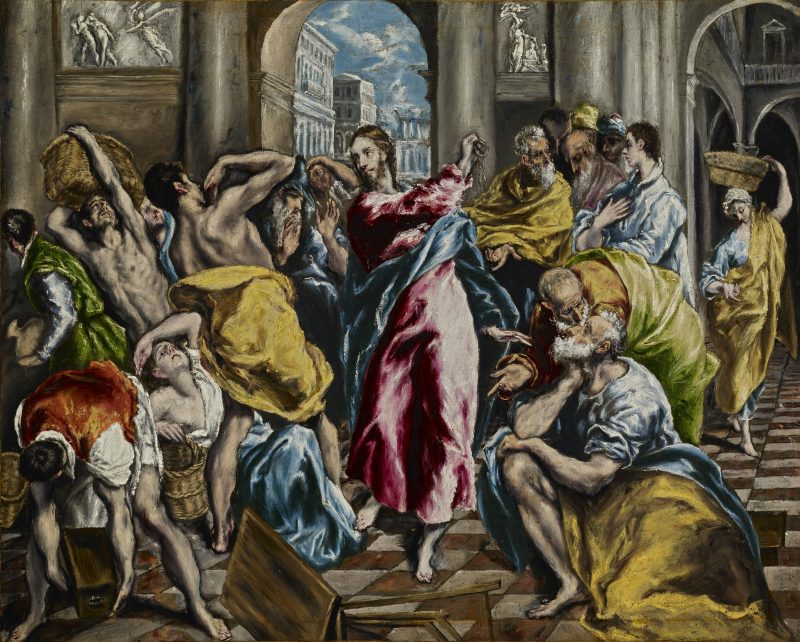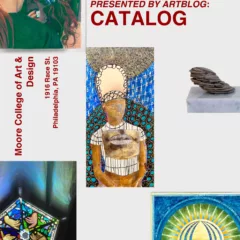
I have wanted to write a short piece on the problem of the relation between art, commodities, and work for a while but never got round it. The reason for this, I think, boiled down to the fact that it is a rather complicated issue and I did not believe that I could compose and organize my ideas in as clear a manner as possible. I am not entirely confident that I have managed to write an accessible article on the issue so I ask for both the reader’s forgiveness—as some points might be equivocal—and for his/her patience—as some parts may require re-reading.
In what follows, I will make three interrelated remarks. First, I will explore the basic problem with the assumed opposition between, on the one hand, an art market, and on the other, an anti-commercial arts community, or the “DIY art scene” as it is referred to in Philadelphia. Second, I will analyze the presupposition that anchors the division between art market and anti-commercial art initiatives. Third, I will reflect on what I take to be the crucial mediation of the problem of sustaining life as an artist in contemporary life–the problem of paid work.
Art markets and the DIY attitude
Recently, I had a meeting with a director of an artist-run space in Philadelphia. At many points in our discussion we touched on the issue of selling artwork. This led to reflections on the state of the art market in Philadelphia and the strong anti-commercial ethos of sections of the Philadelphia DIY art community. It strikes me that this opposition is a good place to start, not least because it forms the elementary premise on which a number of conversations that I have had with people from the arts community here in Philadelphia about the state of art in the city and the rest of the United States are based.
It is a commonly held belief that the ‘art scene’ in Philadelphia is essential bifurcated into two, relatively exclusive entities. On the one hand, there is an art market and, on the other, anti-market, DIY initiatives. In the context of the former, it is assumed that art is nothing more than a commodity, thus its capacity to be something other than an object purchased for the sake of profit is precluded. What drives this sector is the expansion of profit. It does this by accumulating objects (collected artworks) and setting them into a process of circulation (via exhibitions). This circulating process comes at a cost to the collector (the cost of organizing a show), which is a risk that s/he is willing to take as, if successful, the artworks exhibited might rise in price. The speculative gesture operates on the idea that the more a work is seen and discussed, the more its value rises.
Within a social context in which art is produced but is not sold within a market, art is ostensibly liberated of the trappings of the market. Artists are unshackled by the authoritarian demands of the market and are free to determine what the social significance of art is. In Philadelphia, the artistic practices that fall into the non-market context coalesce around the notion of DIY. Significantly, the DIY attitude in Philadelphia does not, for the most part, develop platforms on which to trade in art. Rather, it develops platforms on which to continue making work (via artist-run studio spaces) and communities in which the non-commercial value of art is discussed, constructed, and contested.
As self-evident as the division between art market and DIY community seems, it belies a crucial presupposition that is uncritically assumed: the division is grounded on the false idea that, before one chooses which realm to enter, the very activity of the production of artworks is fundamentally free of social, political, and economic historical conditions. In other words, the opposition is premised on the assumption that an artist is free to decide what s/he wants to do in relation to their art and that, more importantly, the product of his/her activity—the artwork—is a free floating object that either gets chosen by a discerning collector in order to be speculated on in the market or finds itself produced by a political motivation to make sure that the former does not happen.
Is an artist free to choose whether to enter the world of commerce or situate him/herself against it? More importantly, are the two zones externally opposed realms or do they inter-relate with one another in significantly more complex ways? Let us consider these questions from the standpoint of the figure of the artist.
The fantasy of freedom
An artist is, like all individuals, both a product of his/her time and the producer of the time in which s/he inhabits. In the context of our historical moment, this means that we are all subjected to the mechanisms of advanced monopolistic capitalism and the agents that produce those mechanisms. The problem is that, under the conditions of capitalism, we are systemically barred from realizing the latter reality in any progressive or different sense since the capitalist system that structures our existence has restricted our activities to a brutally one-dimensional form–we are subjected to the laws of paid work.
This capitalistic subjugation is, however, grounded on a paradoxical sense of freedom. You are free to sell your capacity to work because no one owns you, but you must sell your work in order to exist. In a perverse sense, then, capitalism is the general condition in which you are free to actualize your un-freedom. The form of domination produced in capitalist societies is not that of a sovereign despot who rules directly over his subjects by external aggressive authoritarian power. Rather, it is more complex since it dissolves the opposition of freedom and un-freedom by bringing the two points into a state of inter-relation–in capitalist society, your freedom is the condition of your un-freedom and vice versa. This is because work is, if understood more expansively, is the capacity to transform the world; yet, capitalism is the contraction of this expansive sense—it converts work into a simple means of subsistence.
Crucially, artists working today are not free from these conditions. They are, first and foremost, individuals that are free to sell their capacity to work, but have to do this in order to both exist as such and to exist artistically. By the latter sense I mean that the artist must work in order to buy materials to produce art, to pay rent for studio space, to pay for magazine subscriptions, museum tickets and all the other costs that go with being an artist today.
The commodification of work
The subjugation of the artist to the everyday necessity of work is only one dimension that cuts through the fantasy of an uncorrupted artistic freedom. The second dimension concerns precisely what paid work is within capitalist societies.
In our note above, it was established that in order to exist artistically (to be an artist) the artist must find work of some sort. Whether this work is selling your art or working in the service industry, the crucial point is that your very capacity to work is not simply the means to an end (the money you earn) but is itself a commodity. Work is not simply a thing that we do in order to earn money. Rather, the very cost of our work is a cost in the process of production and circulation of capitalism. The commodification of work was gestured toward in an earlier remark concerning the state of freedom and un-freedom in capitalism: one is free to sell one’s capacity to work to the highest bidder under conditions in which one must sell one’s work. This means, above all else, that work itself is a commodity since it is traded in just as much as an object; it is openly traded on a market, namely, the competitive job market.
This is one reason why life in capitalist societies is so difficult. Most of us only have the capacity to sell our work in constantly fluctuating conditions that we do not determine for ourselves but that are, nevertheless, produced by us because they are a product of our work. Artists are not free of this difficulty. They suffer (at least most of them) the same consequences as every other worker. It is for this reason that the following conclusion needs to be drawn. The artist’s products (artworks) are neither commercialized objects nor anti-commercial declarations. They are both. They are simultaneously commodity and artwork.
More precisely put, an artwork is first and foremost an expression of the contradiction of the condition of the commodification of labor—since this condition is the condition on which the production of artworks is made possible—and the production of an object that in some way has the potentiality of pointing beyond the conditions that produce it. The processes of paid work always mediate artistic activity; the latter can only actively struggle to free itself of those mediations by attending to them.
Closing remark
I believe that the crucial point to make in discussions about art and commodities is not on what side of the fence one ought to sit, but rather the way in which there is, strictly speaking, no fence from which one can take sides. There is, rather, a more complex contradictory condition in which one at once produces and reproduces one’s own activity as a commodity and attempts to produce something that points beyond that commodification. This means that one needs to get one’s head around a rather difficult proposition: freedom is attained only through the state of un-freedom. Art is one way of negotiating this paradox.









